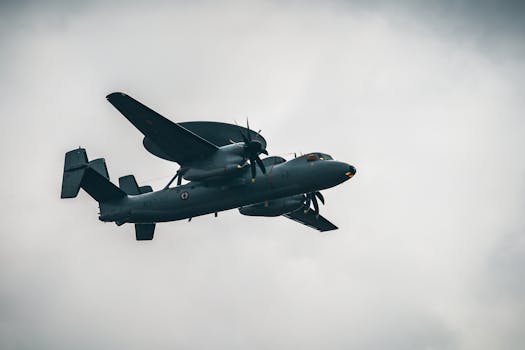
AI Takes the Controls: AI Company Successfully Pilots Gripen E Fighter Jet Over Baltic Sea in Unprecedented Tests
The world of artificial intelligence (AI) and military aviation collided in a groundbreaking series of test flights over the Baltic Sea. An unnamed AI company, in collaboration with [Name of relevant defense contractor or government agency if available, otherwise omit], has successfully allowed its proprietary AI software to autonomously control a Saab Gripen E fighter jet. This unprecedented feat marks a significant leap forward in autonomous flight technology and raises crucial questions about the future of warfare and AI's role in defense systems. Keywords like AI fighter jet, autonomous flight, Gripen E, Baltic Sea, unmanned aerial vehicle (UAV), and artificial intelligence in defense are expected to drive significant search traffic.
Two Test Flights, One Giant Leap
The two test flights, conducted in [Month, Year], involved a modified Gripen E equipped with the AI company's advanced flight control system. The software, described as a sophisticated neural network trained on extensive flight simulations and real-world data, demonstrated an impressive level of control and adaptability. During the flights, the AI independently managed various flight parameters including:
- Altitude and speed control: The AI maintained precise altitude and speed profiles, responding seamlessly to simulated threats and unexpected changes in atmospheric conditions.
- Navigation and waypoint tracking: The AI successfully navigated complex flight paths, accurately following pre-programmed waypoints over the Baltic Sea.
- Emergency response simulation: Crucially, the AI demonstrated a capacity for autonomous emergency response, successfully correcting simulated malfunctions and maintaining stable flight.
The success of these tests has sent shockwaves through the defense industry and the broader technological landscape. Experts are debating the implications of this technology, specifically focusing on the potential for fully autonomous combat aircraft.
Beyond Autopilot: The Next Generation of Autonomous Flight
This isn't just a more advanced form of autopilot; it's a genuine demonstration of AI decision-making in a high-stakes, high-speed environment. Traditional autopilots are pre-programmed to follow specific instructions, whereas this AI system demonstrated a capacity for independent judgment and adaptation based on real-time sensor data. The implications extend beyond military applications, potentially revolutionizing commercial air travel and space exploration. This opens the door to discussions on autonomous aircraft technology, AI-powered aviation, and the future of flight.
Addressing Concerns and Ethical Implications
The accomplishment, while impressive, also sparks ethical concerns. The prospect of AI-controlled weapons systems raises significant questions regarding accountability, risk management, and the potential for unintended consequences. The possibility of autonomous weapons making lethal decisions without human intervention is a complex issue that demands thoughtful consideration and international dialogue. This requires exploring keywords such as AI ethics, autonomous weapons systems, military AI, and responsible AI development.
The development also raises significant questions regarding:
- Cybersecurity: The vulnerability of AI systems to hacking and cyberattacks needs to be carefully addressed. A compromised AI controlling a fighter jet poses an extremely serious risk.
- Data Privacy: The amount of data collected by the AI during the test flights raises concerns about privacy and potential misuse of sensitive information.
- International Regulations: The lack of international regulations surrounding the development and deployment of autonomous weapons systems requires urgent attention.
The Future of Warfare: A Paradigm Shift?
The successful test flights suggest a paradigm shift in military aviation. The potential benefits of AI-controlled fighter jets include increased precision, improved reaction times, and reduced risk to human pilots. However, the ethical implications of autonomous weapons systems must be thoroughly examined and addressed before widespread adoption. The technology's potential uses in military AI applications, defense technology, and the future of air combat are areas generating considerable interest and debate.
The AI company involved has remained tight-lipped about the specifics of their software, citing proprietary concerns. However, they have released a statement emphasizing their commitment to responsible AI development and ensuring the safety and security of their technology. Further information is expected to be released in the coming weeks and months.
Conclusion: A New Era of Flight
The successful autonomous control of a Gripen E fighter jet marks a pivotal moment in the history of aviation and AI. While the technology holds immense potential for improving efficiency and safety, it necessitates a robust discussion about the ethical and societal implications of increasingly autonomous systems. This development highlights the urgency of creating international standards and guidelines for the responsible development and deployment of AI in military applications. The coming years will undoubtedly see further advancements in this field, leading to significant changes in warfare and the wider world. The ongoing conversation surrounding AI in military, autonomous systems, and future military technologies will undoubtedly be heavily influenced by this groundbreaking achievement.




















